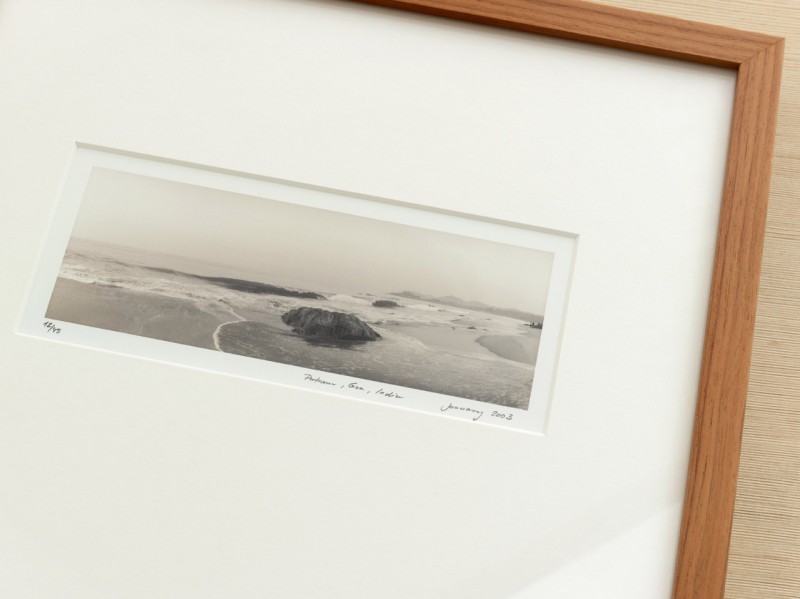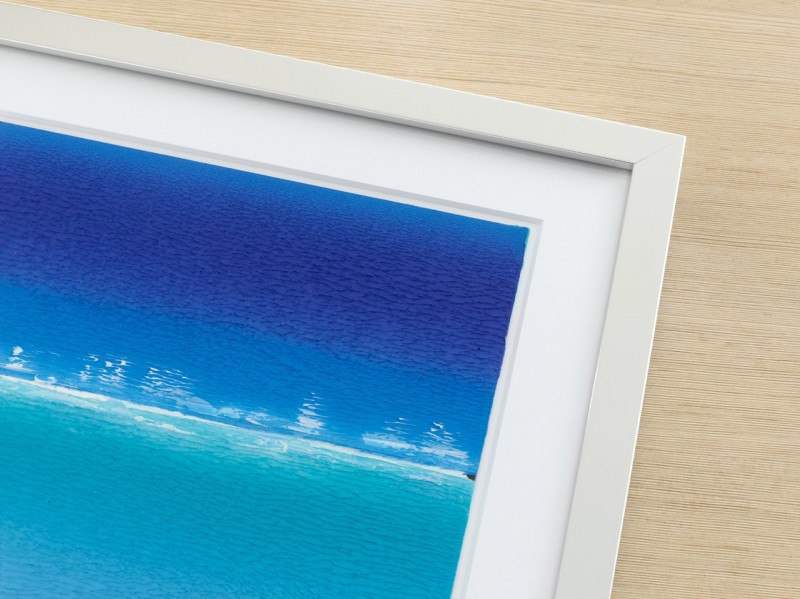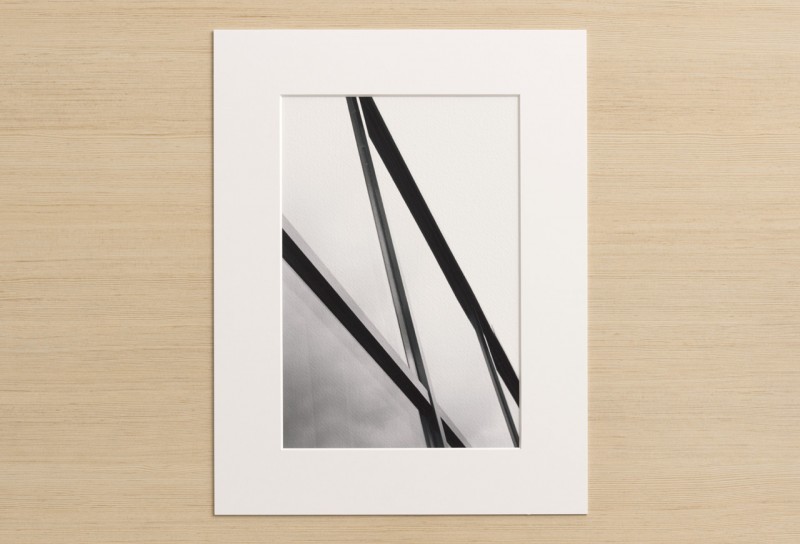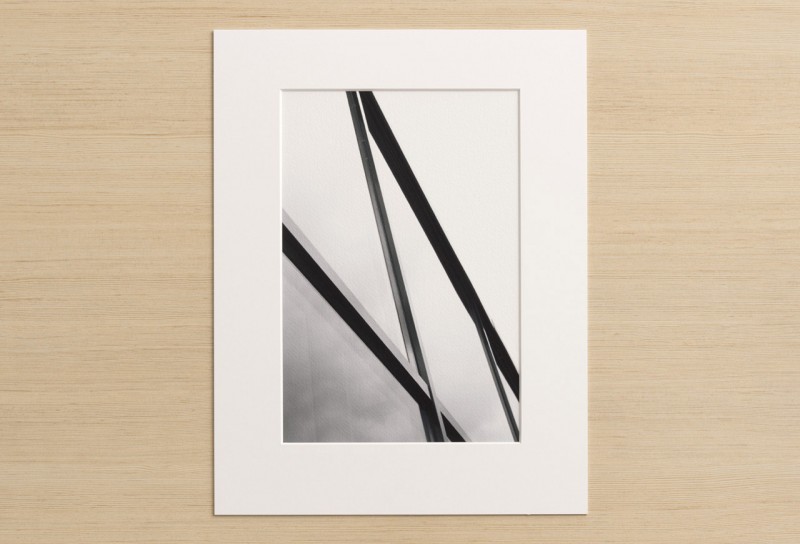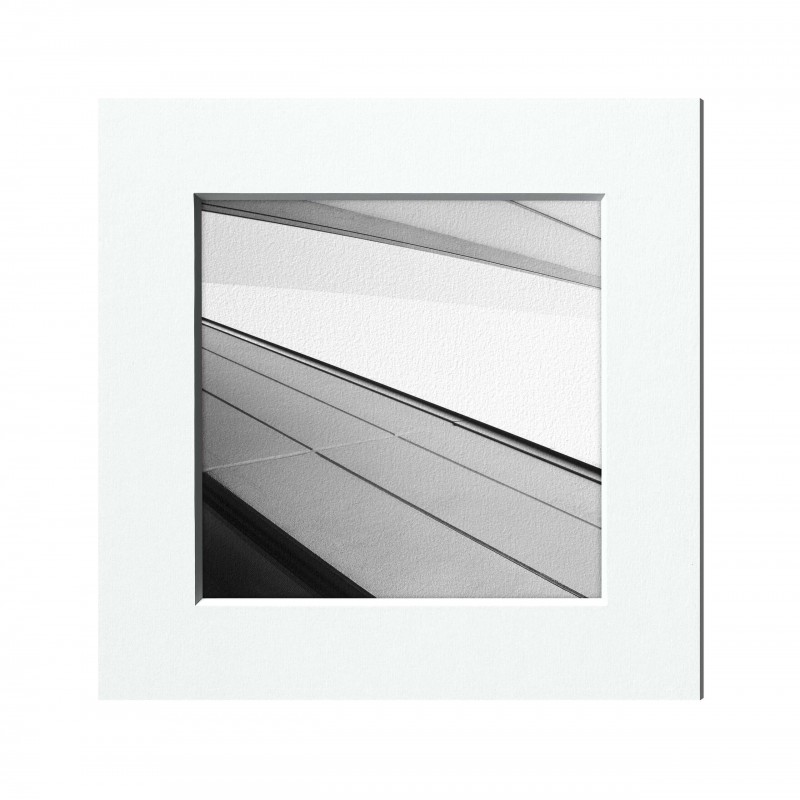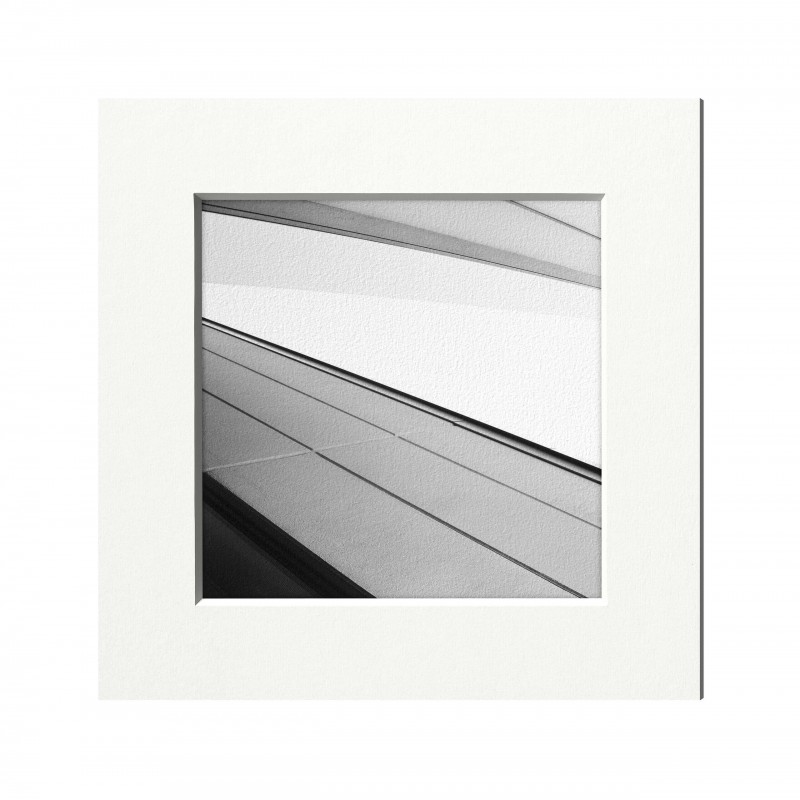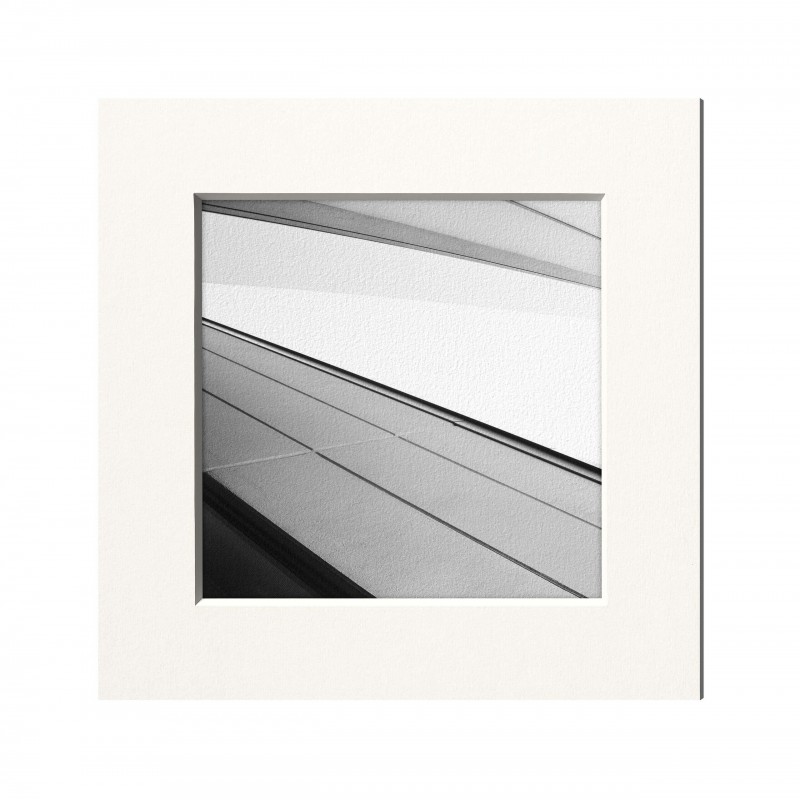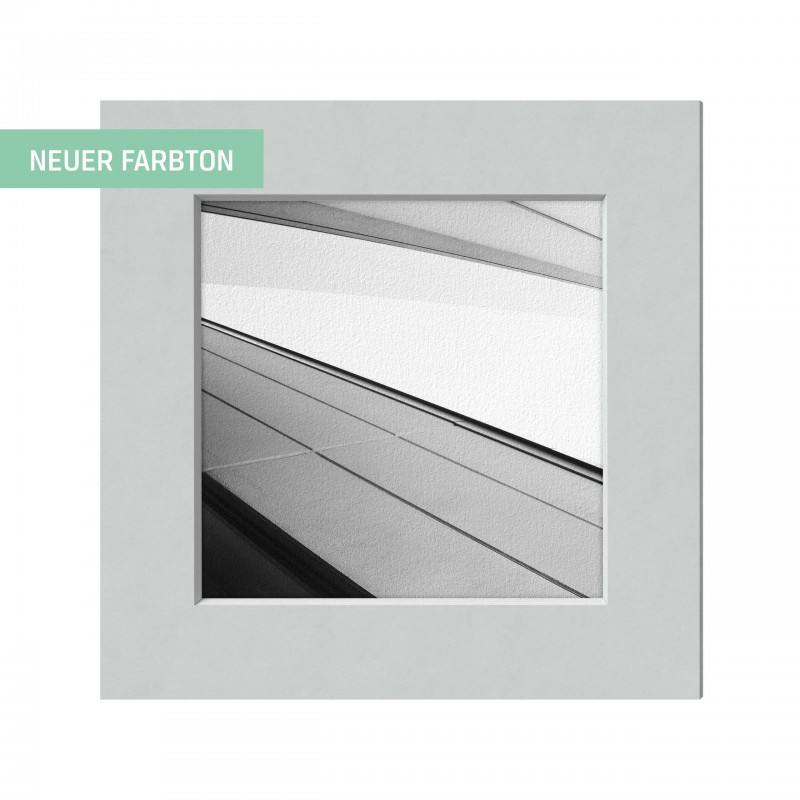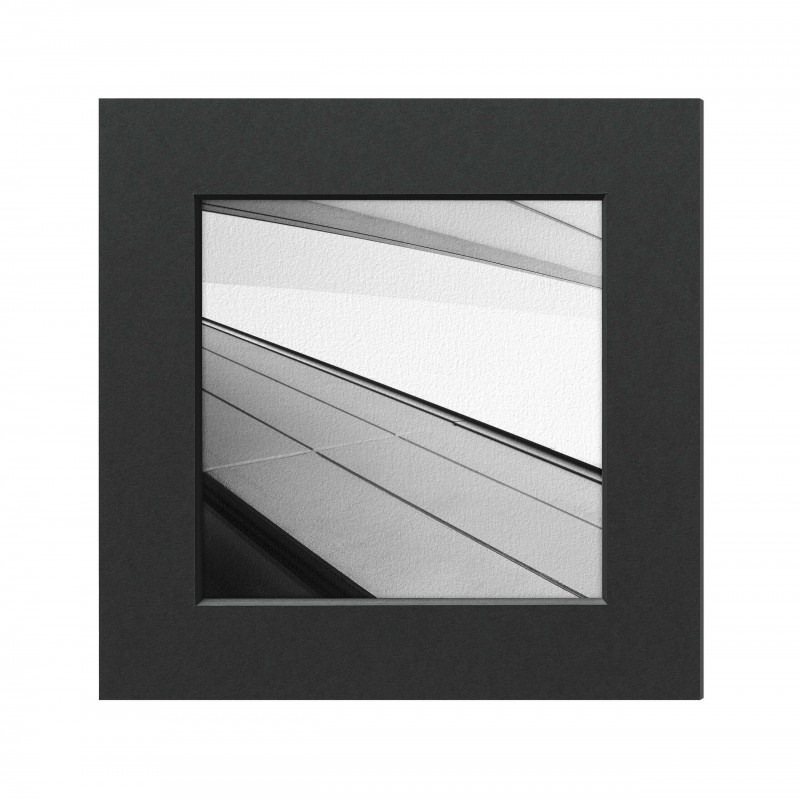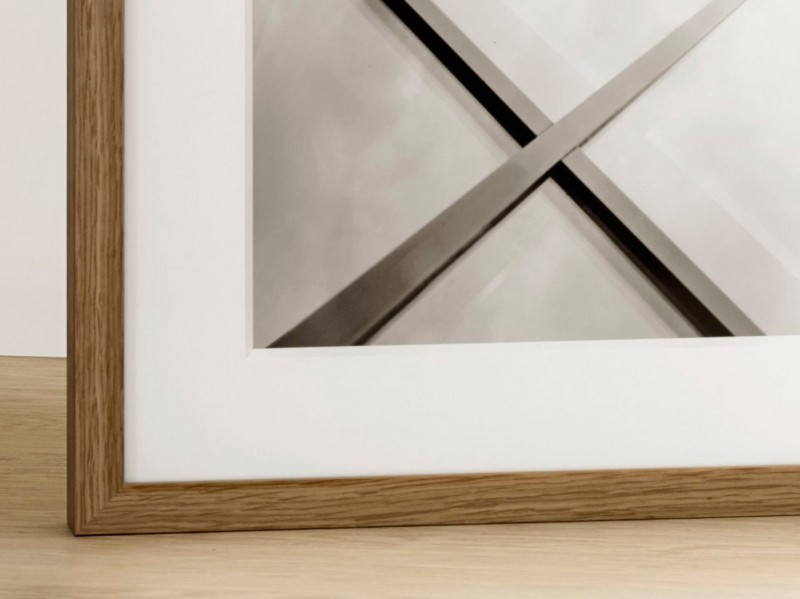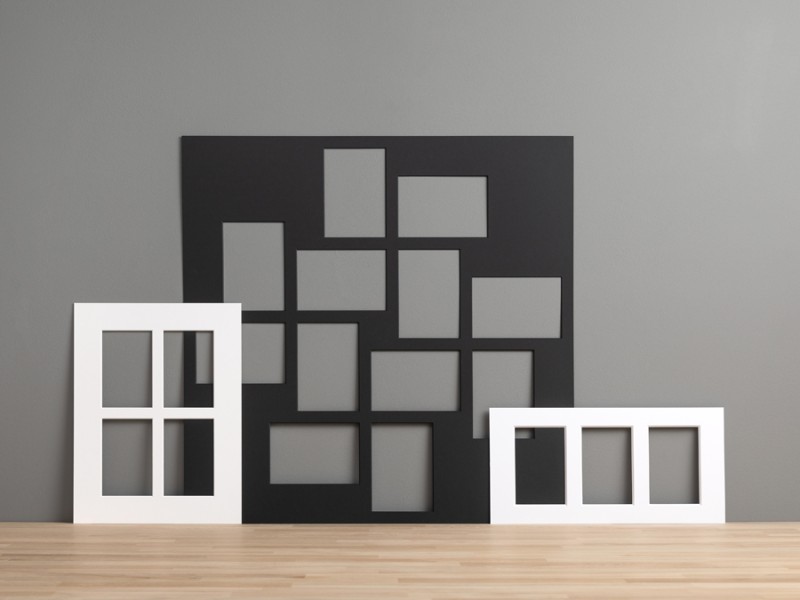HALBE offers five colours and several different strengths between 1.5 and 3 mm - either as standard window mat or folding window mat with an additional mounting board. With folding window mat the window mat is fixed to a mounting board behind it with self-adhesive tape, similar to a hinge. The picture can thus be fixated on the mounting board instead of the back side of the window mat.
FRAME YOUR PICTURE AND GIVE IT SPACE
Window mat
A window mat not only frames the picture inside a frame, it also gives it more room to unfold. In addition, it prevents direct contact of the glass with the object. Framing with a window mat inside a frame is the earliest form of picture presentation.
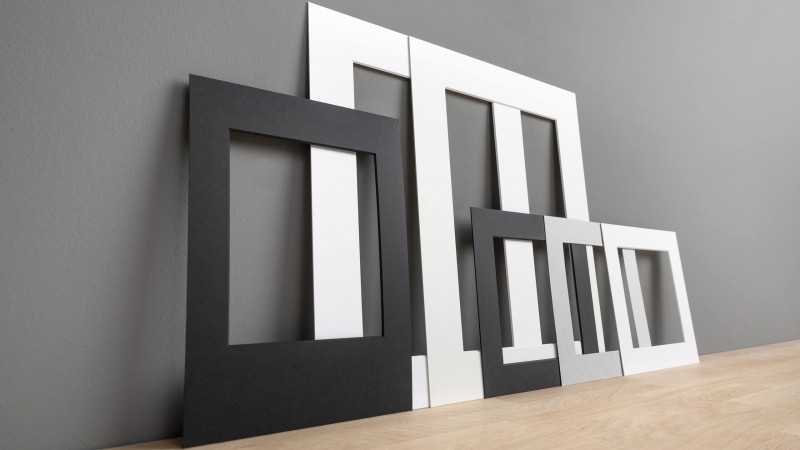
Application.
Framing with a window mat provides plenty of possibilities to enhance the presentation and the impact of your picture. It makes your work of paper look more valuable. With strong, wavy works of paper you should also use a strong window mat. In addition, the picture does not directly touch the glass when framing with a window mat.
Bevel-cut window mat.
A high-quality window mat gives the bevel cut more depth and gives the picture more room (due to the extra distance to the frame) as the framing on the whole is also bigger. A thicker window mat intensifies the effect. The cut-out for your picture and the size of the window mat is produced to the exact millimetre according to your requirements. Sketched-based multiple cut-outs are also possible.
Premium quality.
Cardboard is not just cardboard. For our bevel-cut passe-partouts we only use premium quality KLUG museum mounting board with quality guarantee. It excels through its high age and light resistance and is 100% acidfree - for active protection of your art. The fine structure of the surface gives the product an upmarket look.
From picture to window mat.
With a window mat you can create different settings for your art. Generally the placing of the picture within the frame is important for the overall visual effect. There are multiple options, from central positioning to golden cut. The ideal size of a window mat can easily be determined by the picture size using the HALBE window mat configurator.
For a perfect presentation of your picture there are various design possibilities for your window mat cut-out. Generally all inner and outer measurements can be determined down to the millimetre. With our HALB window mat configurator you can choose the placing of your individual cut-out to be entirely free or one of three pre-set options: "central", "optical centre" and "golden cut":
Central.
Mostly the cut-out is placed at the centre, i. e. with the same edges at the top, bottom, left and right. Like this, you can use your window mat in landscape or portrait format, which is convenient for changing exhibitions. For a more interesting presentation you can place the picture slightly higher.
Optical centre.
With this variation the cut-out in the window mat is slightly shifted to the top: the lower edge of the window mat is then slightly wider than at the top, which makes it looks as if the cut-out was placed in the middle. With the "central" variation, depending on the picture and proportions, the lower edge of the window mat seems to be smaller than at the top.
Golden cut.
The golden cut is a harmonic ratio that is particularly comfortable for us to view. In terms of art and placing a picture in the frame, according to a mathematical formula, the lower edge of the window mat is made considerably wider than at the top. In the HALBE window mat configurator this option is simply visualized at the click of a button.
APPLICATION EXAMPLES
Extract from the KLUG quality guarantee
- Made by KLUG-Conservation
- 100 % bleached cellulose
- without the usage of recycling fibres
- free of wooden fibres
- lignin-free
- acid-free (in accordance with DIN ISO 6588-1:2012)
- Alkaline buffer > 3 % natural calcium carbonate (GCC)
- Photographic Activity Test (PAT) passed in accordance with ISO 18916:2007
- highest level of permanency LDK 24-85
- Glue used for lamination free of solvents and plasticizers (softening agents)
Standards:
- DIN EN ISO 9706
- ANSI/NISO Z39.48
- DIN 6738:2007
Sizes, thickness and colours:
- can be ordered online from 130 x 130 mm up to 1200 x 1400 mm
- Window mat available in thickness 1.5 and 3.0 mm
- larger formats possible on request
- 1.50 mm thickness, up to 1200 x 1400 mm: White, Antique white, Natural white, Grey, Black
- 1.50 mm thickness, up to 1400 x 2500 mm: White, Antique white, Natural white
- 2.60 mm thickness: up to 1680 x 2500 mm: Antique white
- 3.00 mm thickness: up to 1200 x 1400 mm: White, Antique white, Natural white, Black
- most frequently used thickness up to 1200 x 1400 mm: 1.5 millimetres
Exposed sheet of paper.
Displaying the entire sheet up to the edge and presenting it with a window mat is called an exposed sheet of paper. Here the picture is mounted onto a background cardboard of a folding window mat and the cut-out is larger than the paper format. Like this, the edge of the paper looks special.
Motif is not covered.
Often the sheet of paper is larger than the actual motif. In this case the window mat cut-out can be 5 to 10 mm wider all-round than the motif. The gap between picture motif and window mat edge intensifies the effect of the picture. Ideal for signed pictures!
PERFECT CUT-OUT
COLOURS AND STRENGTHS
W White
AW Antique white
NW Natural white
G Grey
S Black
Folding window mat.
This kind is particularly recommendable when the sheet of paper is exposed or the motif is meant to be exposed for presentation purposes. Folding window mat are equally practical for professional storing in archive boxes or when the picture is not supposed to be mounted directly on the window mat but on a cardboard behind.
Motif is covered.
This is the most common type of picture presentation with a window mat: The motif is usually covered all-round by a 3 to 5 mm bevel-cut window mat. When ordering your window mat the cut-out should be respectively smaller than the picture. This makes the picture easy to install and not too much of the motif is covered and lost.
advantages and features
Floating window mat.
A rare and yet very popular application of a window mat. Here the window mat is placed directly behind the glass with a separator or distance shims to the exhibit. This creates the impression of a window mat that is floating in front of the picture, which gives the motif an additional effect of depth.
Multiple cutout.
Multiple cutouts are also possible. Please send us a hand sketch (also DXF or DWG drawing) with all cutouts, edge widths and web widths to info@halbe.de. The minimum web width is 20 mm, for larger formats possibly more. Each cutout will be charged with 1 € additionally. For stability reasons, shipping may only be possible in combination with a picture frame
Multiple cutout.
Multiple cutouts are also possible. Please send us a hand sketch (also DXF or DWG drawing) with all cutouts, edge widths and web widths to info@halbe.de. The minimum web width is 20 mm, for larger formats possibly more. Each cutout will be charged with 1 € additionally. For stability reasons, shipping may only be possible in combination with a picture frame




